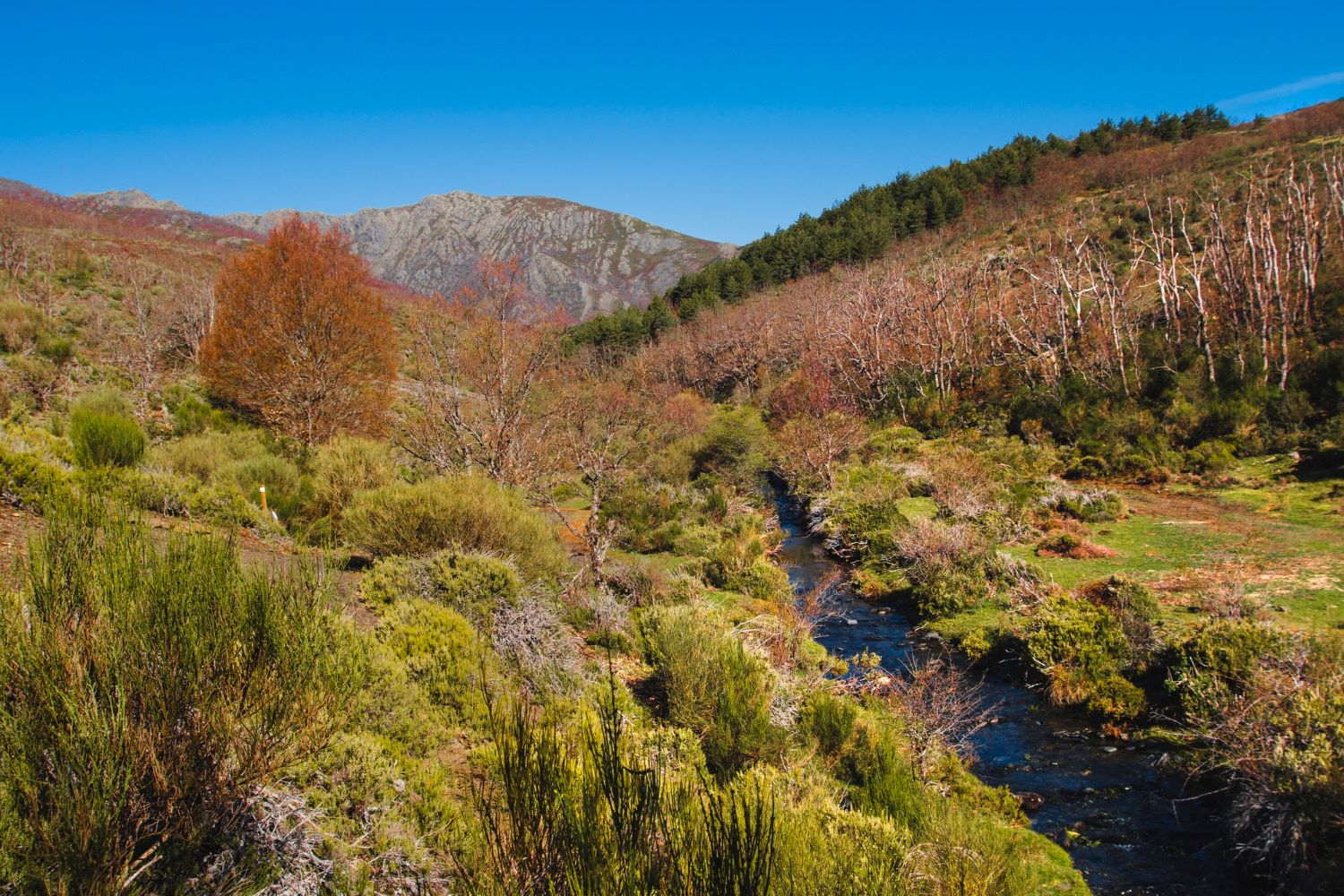Reactions: two-thirds of conservation efforts help combat biodiversity loss
Two-thirds of biological conservation actions improve biodiversity or slow its decline, a meta-analysis claims. The study highlights the effectiveness of interventions focused on invasive species control, habitat loss reduction and restoration, and protected areas. The article, published in the journal Science, brings together the findings of 186 previous studies.

Jorge Lobo - conservación
Jorge M. Lobo
Researcher in the Department of Biogeography and Global Change at the National Museum of Natural Sciences (MNCN-CSIC)
This study is based on a review of those publications that have examined the impact of some conservation action in alleviating or neutralizing the loss of biodiversity due to our impact on natural systems. The conclusion highlights what may seem obvious: that the efforts made in conservation are useful to reduce and even paralyze the efforts to annihilate, deliberately or involuntarily, the populations of many species. The authors find that, in two out of three cases, conservation actions are successful and paralyze or reduce the effects of the agent that caused a loss of biodiversity.
The study undoubtedly offers a necessary message. If we focus our efforts correctly, humanity has the knowledge and technological resources necessary to reverse the effects of our actions on biological diversity. This is an encouraging result that, unfortunately, does not diminish the massive amount of alarming data on the general situation of biodiversity. If some 130 studies show that it is possible to restore biodiversity after a harmful effect, there is much evidence that shows that human actions are causing an unprecedented and irreversible decline in the planet's biodiversity. Can we really reverse this situation? Let's look at some data.
In December 2022, sponsored by the United Nations, almost 200 countries approved a new plan to try to reverse before 2030 the decline and extinction of the populations of living beings that inhabit, alongside us, the only that we have. This plan was proposed after the failure of a previous one held in 2010 in which, optimistically, another set of goals was proposed to reduce the loss of biodiversity in 2020. If the authors of this study demonstrate that the task is possible, the data are stubborn Works are loves. As the authors recognize, the annual investment made in the world for biodiversity conservation (121 billion dollars) would be almost 20 times less than annual global military spending, and about 14,000 times less than global spending on supporting fossil fuels that cause climate change.
About the limitations of the study:
- As the authors themselves acknowledge in the supplementary material, the data are biased towards terrestrial environments and regions of the world with the least biodiversity and greatest conservation resources: Europe and North America. Data are lacking from tropical areas, where detrimental anthropogenic effects are greatest.
- The study exemplifies the scarcity of studies that, with a standardized methodology, compile reliable information before and after a specific conservation action. We lack biodiversity observatories that, like climatological stations, provide us with comparatively reliable data.
- The positive cases detected do not imply that the situation of biodiversity loss is reversed, but it is enough for the conservation action to slow down the rate of decline for it to be considered positive.
Francisca Ruano - conservación EN
Francisca Ruano Díaz
Professor of Zoology at the Department of Zoology and coordinator of the Applied Ecology and Agroecosystems research group at the University of Granada
El artículo destaca la eficacia de las acciones de conservación y ofrece una perspectiva talentosa para aquellos involucrados en la protección de la biodiversidad. Da respaldo a la inmensa mayoría de las acciones que se han llevado a cabo en el ámbito de la conservación, eliminando el derrotismo que a veces nos invade cuando constatamos que se siguen extinguiendo especies y que las acciones que se llevan a cabo parecen no ser suficientes. para eliminar el deterioro de la biodiversidad que se está produciendo. Sin embargo, en este trabajo se concluye que la inmensa mayoría está obteniendo resultados muy positivos. De forma contrapuesta, solo un 11,6 % de las inacciones en conservación producen efectos positivos en la biodiversidad.
En el aspecto metodológico, el trabajo se basa en un gran número de artículos iniciales, finalmente 186 incluidos en el estudio, lo que permite presentar resultados en una escala espacial amplia (desde lo local a lo continental) y por primera vez, también temporal ( más de un siglo). El gran número de artículos manejados permite además profundizar en el éxito diferencial de distintas intervenciones conservacionistas. Esta vertiente del estudio me parece especialmente relevante de este artículo, porque facilita diferente respaldo a cada una de ellas, analizando incluso cómo mejorar su repercusión, especialmente en el caso de la creación de espacios protegidos.
Todas las intervenciones habituales en conservación tienen efectos netos principalmente positivos, pero son la erradicación y control de especies invasoras o problemáticas nativas (especialmente en islas) y el manejo sostenible y restauración son los que tienen una mayor repercusión positiva. Este resultado vuelve a incidir en la necesidad de mejorar la gestión de los ecosistemas terrestres explotados por el ser humano. Este tipo de intervención tiene beneficios acumulados, como conseguir los bienes de aprovisionamiento con un menor gasto de insumos, más saludables para el ser humano y el planeta. Además, sus beneficios sobre la abundancia de las especies nativas y la cobertura vegetal de los hábitats resultan indiscutibles, según concluyen los autores.
Sin embargo, la creación de espacios protegidos, también con beneficios netos positivos claros, está condicionada a la obtención de financiación adecuada en el tiempo y aceptación social, lo que la hace una intervención necesaria pero dependiente de más condicionantes externos.
El estudio también presenta algunos déficits de los que son conscientes, como la falta de estudios en el sur global o sobre los efectos concretos del control de la polución o las adaptaciones al cambio climático. Abre también nuevos retos para la comunidad científica que será necesario ir incluyendo en nuestras agendas.
En resumen, me parece un artículo oportuno, relevante y muy útil desde todo punto de vista (investigación, gestión, docencia).
Inmaculada Álvarez - conservación EN
Inmaculada Álvarez-Manzaneda Salcedo
Permanent professor in the Department of Ecology at the University of Granada
The decline of global biodiversity is an ongoing problem with serious negative consequences for people. In order to address this situation, more than 121 billion dollars are dedicated annually to the conservation of the world's biodiversity. However, none of the 20 targets set by the Convention on Biological Diversity's Strategic Plan for Biodiversity has been achieved. While this might suggest that biodiversity conservation measures are being implemented to no avail, a more thorough analysis of these measures and their effects on biodiversity is essential.
This comprehensive meta-analysis by Penny Langhammer et al. for the journal Science examines the impact of conservation actions by analysing a total of 186 studies. The study, unlike previous studies, takes into account the type of conservation action taken, its levels and the different effects on biodiversity over time. The methodology by which they carry out their research is described in detail, drawing on and analysing high-quality scientific articles. The authors highlight the importance of comparing the results of these conservation measures with a scenario in which no measures would have been implemented.
They conclude that in two thirds of the cases, positive effects were obtained, either by improving the state of biodiversity or at least slowing down its decline. Of these actions, it should be noted that those focused on the eradication or control of invasive alien species had a high success rate.
This study also highlights the need for conservation measures in many areas where they do not currently exist. It would be important to make comparisons of the current status of certain ecosystems or species in these areas with the status of similar ecosystems or species that have been subject to conservation measures elsewhere on the planet. It is essential to inform both the public and management agencies, so that they are aware that conservation measures work and are essential for society. The benefits of these actions are infinitely greater than their costs, and will undoubtedly be appreciated by future generations.
Penny F. Langhammer et al.
- Research article
- Peer reviewed
- Meta-analysis



